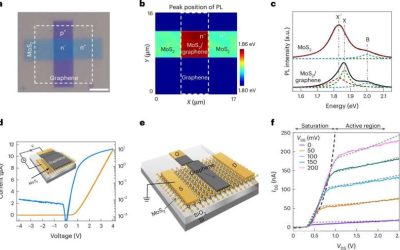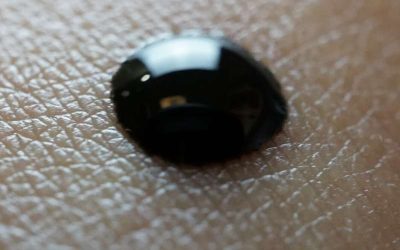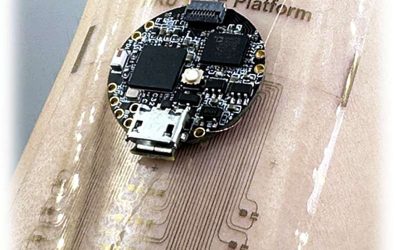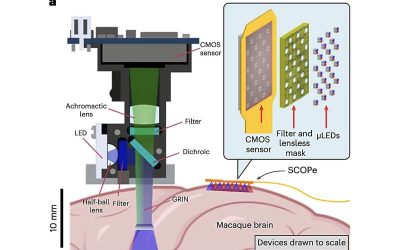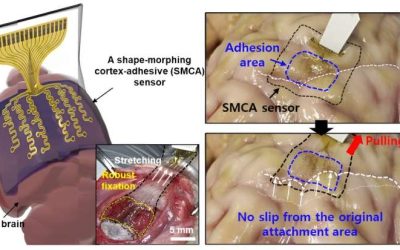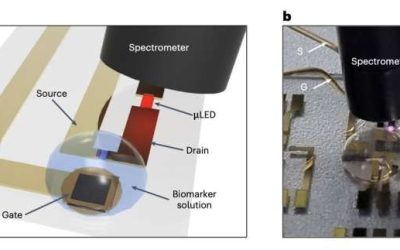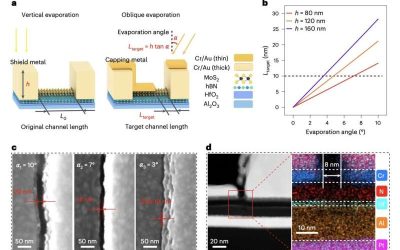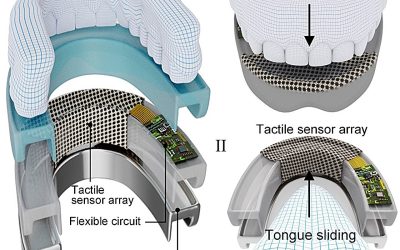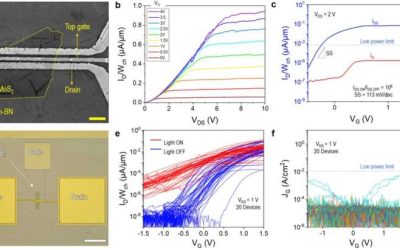Edge computing devices, devices located in proximity to the source of data instead of in large data centers, could perform computations locally. This could reduce latency, particularly in real-time applications, as it would minimize the need to transfer data from the...
Electronics & Semiconductors
Novel liquid acoustic sensor mimics whale melon to recognize voices in noisy environments
In recent years, engineers have developed a wide range of increasingly sophisticated sensors for robotic, portable, wearable and even implantable monitoring. The data collected by these sensors can then be analyzed using state-of-the-art machine learning, allowing...
Stretchable transistors used in wearable devices enable in-sensor edge computing
Organic electrochemical transistors (OECTs) are neuromorphic transistors made of carbon-based materials that combine both electronic and ionic charge carriers. These transistors could be particularly effective solutions for amplifying and switching electronic signals...
New ultrathin optical device can precisely capture and stimulate the mammalian brain
Reliably tracking and manipulating the mammalian nervous system in laboratory or clinical settings allows neuroscientists to test their hypotheses, which may in turn lead to new important discoveries. The most well-established and widely used technologies for studying...
Shape-morphing brain sensor adheres to curved surfaces for ultrasound neurostimulation
Transcranial focused ultrasound, a non-invasive technique to stimulate specific areas of the brain using high-frequency sound waves, could be a promising treatment strategy for many neurological disorders. Most notably, it could help to treat drug-resistant epilepsy...
Ultrathin organic-inorganic device shows promise for wireless monitoring of biomarkers
In recent years, electronics engineers have developed a wide range of wearable and implantable devices that can detect and record biological signals. These devices can help to keep track of various physiological processes, such as heart rate, arterial pulse, sleep...
Researchers develop scalable approach to integrate ultrafast 2D flash memories
The widespread use of artificial intelligence (AI) tools designed to process large amounts of data has increased the need for better performing memory devices. The data storage solutions that could help to meet the computational demands of AI include so-called...
Smart mouthguard allows users to control devices with their tongue and teeth
Recent technological advances have enabled the development of a wide range of electronic devices designed to improve people's quality of life and assist them in completing their everyday activities. Most existing devices are operated via touch screens, keyboards,...
Researchers develop approach to fabricate highly performing transistors based on 2D semiconductors
Two-dimensional (2D) semiconducting materials have distinct optoelectronic properties that could be advantageous for the development of ultra-thin and tunable electronic components. Despite their potential advantages over bulk semiconductors, optimally interfacing...
Self-sensing cantilever design enhances microelectromechanical system performance in challenging environments
Microelectromechanical systems (MEMS) are tiny devices that integrate various components, such as miniature sensors, electronics and actuators, onto a single chip. These small devices have proved highly promising for precisely detecting biological signals,...

